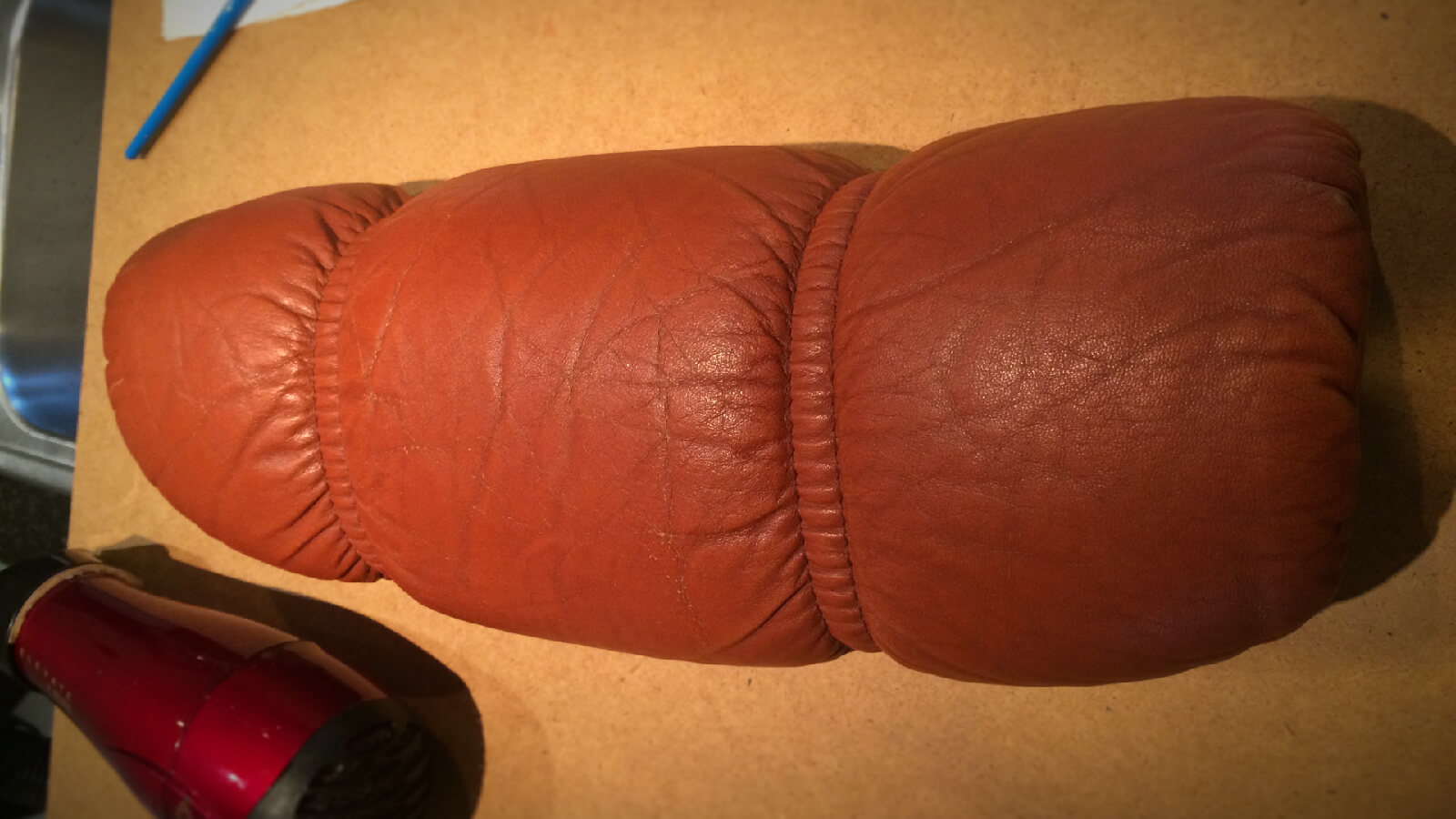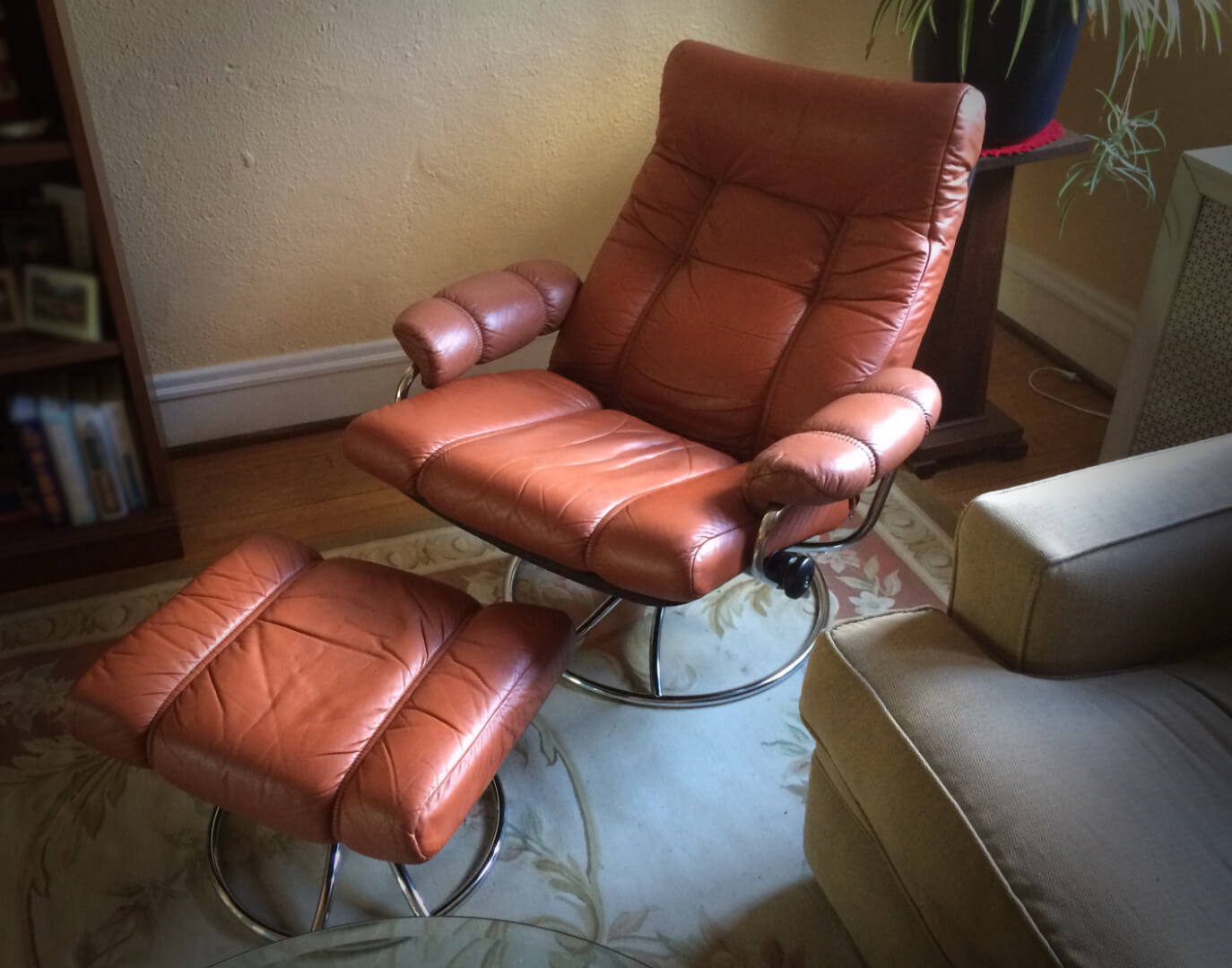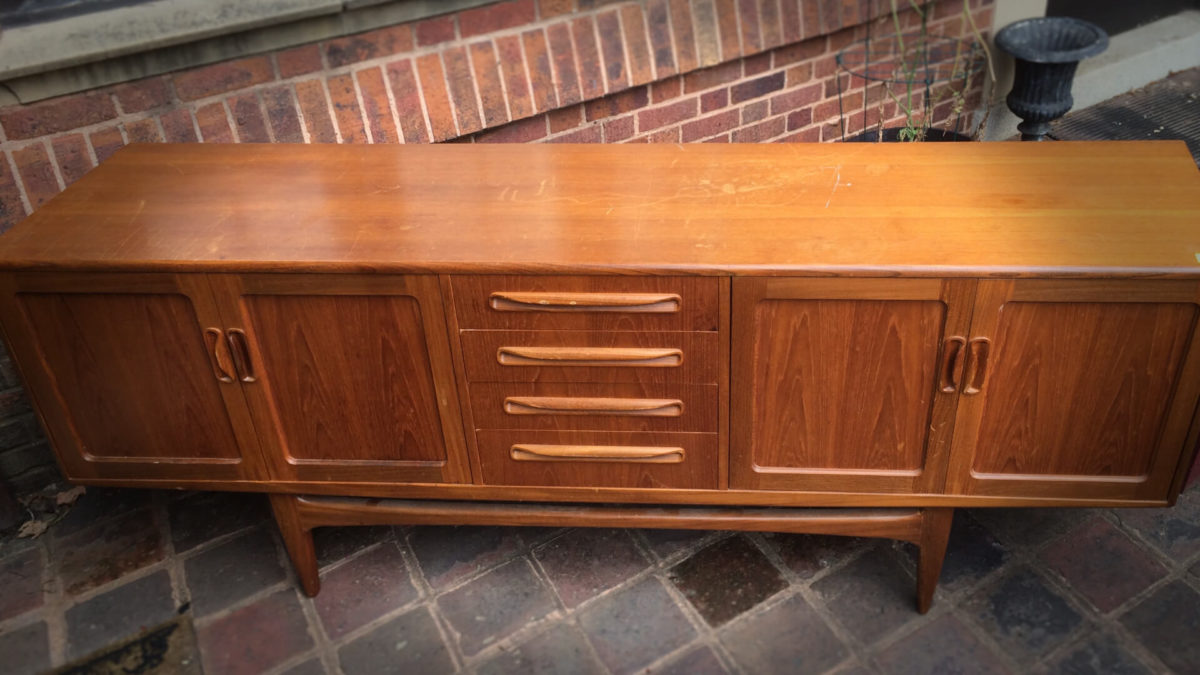A common saying in real estate and business transactions is “money is made on the purchase, not on the sale”. You should anticipate the future value of your purchases. Sometimes, spending more can make good sense to own something with a higher expected future value. Practicing a frugal mindset with your own purchases can let you participate in a similar view of future profit that this quote elicits.
This idea doesn’t apply to just business transactions and real estate. The stuff you own can become future profit streams when you treat them as assets.
The Expected Future Value of Your Stuff
Think about how rarely anyone you know shops around furniture stores and evaluates the present sale price of a couch versus a reasonable expected future value. We, as individuals, view consumer purchases as simple expenditures with no expected future value.
People spend $500 on a couch and walk out the door viewing it as part of their monthly budget—which probably just had a big hole blown in it. They effectively anticipate future value as zero. It’s not an asset to them, it’s a consumable.
Treat Your Purchases as Assets
When people do not value their purchases as assets with an expected future value, they also don’t analyze the transaction in the same way a business—or a frugal mindset person seeking financial independence—would. Rather, it becomes an emotional, convenience-oriented decision.
The Falsehood of Shopping on a Budget
We can imagine a couple shopping for a new sofa. They’re at the store and spy a $2,000 sofa that is just the design they want. It has a lasting hardwood frame and fits their space. But, they’ve entered the store with the idea of an upper spending limit of $600.
So, they keep looking. It’s the couch that is attractive and within their spending budget that they select. They treat the purchase as if it’s like any other budgeted consumable.
The couple then walks out of the furniture store $500 lighter and a couch heavier. They’re happy they spent $100 under their $600 limit. Their interpretation of the transaction is of effectively losing the money in exchange for the couch.
Sunk-cost Fallacy and Stuff you Own
Sometimes, they get home, they spend a month on their new couch somewhat happily. Over time, something slowly eats away at them in the back of their head. Maybe the colors in the showroom displayed differently than in their home. Perhaps it’s a little softer than they expected. In some way, it’s less than ideal.
Rather than sell it at a tremendous loss, they stick it out, succumbing to the sunk-cost fallacy. There’s a mild resentment that builds up over time. The couple hardly tries to keep the couch in good condition. Some years down the road, it finds its way to the landfill or if we’re lucky, donated.
But, how could this entire transaction go differently?
Evaluate Purchases not by Cost, but Value
Let’s pretend the couple didn’t set a specific budget for their purchase. Instead, they looked for the specific sofa that would fit their tastes. They want something made of quality, lasting materials. They spend some time online researching known sofa furniture design firms with lengthy histories and established fanbases. The couple looks at classical designs that have been popular for decades. Lastly, they begin to look into pricing.
The brand they like sells the current iteration of their timeless sofa design for $3,000. The couple finds that even a ten-year-old version of the sofa is a very similar design. It has the same quality materials and supportive fanbase. It’s retained an impressive value, going for about $2,000 on used marketplaces—more than the original retail price as the time it was released! The fanbase supports a strong secondary market for the brand’s designs.
Avoid Depreciation by Buying Used
The couple decided to setup a recurring search on their own local marketplaces for this couch and wait for a good deal. A month later, they happen upon one listed for $1,600 on their local Craigslist.
Armed with the knowledge of the value of the couch, they set up an inspection time with the seller. They reviewed the detailed photos they asked the seller to provide in advance of the meeting so they knew what to expect. They confidently make an offer of $1,500 which the seller accepts.
Because the couple is confident in the future market value of the couch, they take good care of it and don’t view it as a direct expense. They even anticipate some mild appreciation when looking at the historic values. They’ve gained an asset.

Own High-Quality Stuff and Less of it
The couple might find their new timeless sofa design doesn’t fit in with the trinkets and cruft that resides around their family room with the sofa as a centerpiece. This could encourage them to reevaluate the need for all the distracting stuff in the room.
If you’ll let me take a short detour, I’d like to talk a little about minimalism and stuff. I don’t know about you, but we constantly, slowly, add little stuff here and there over time. It’s gifts, impulse purchases, and hobbies fading in and out. The stuff tends to accumulate, forming an unrelatable, incoherent room design of distraction.
Become a Minimalist
One of the best ways to combat growing ownership of stuff is to reevaluate. Sell or regift the unnecessary stuff around the room. Of course, it’s easy to be lazy and just let it keep building up.
I find that one of the best impetuses to get off our butts and unload the unnecessary is in finding a new centerpiece for a room. It provides the motivation to support the aesthetic dictated by the centerpiece, clearing away all the cruft. The lighter visuals provide for a sense of minimalism, which at least to me, brings a sense of peace.
Continuous Improvement and Your Stuff
In business, there’s a process model known as Continuous Improvement. In general, it’s the idea that businesses should establish a feedback-driven model for product and service development. It should incorporate gradual, never-ending change.
There’s no reason you can’t take a page from successful business concepts. You can incorporate this continuous improvement model to the stuff you own.
Let’s get back to how our imaginary couple should handle their new sofa centerpiece purchase.
Discovering Opportunities for a Side Income
One of the first things the couple did, after cleaning and doing some light maintenance on their new sofa, was to list it on their local Craigslist. They knew the going value was about $2,000. They figured they could stand above the competition by presenting the sofa in the best way possible: nicely cleaned, a thorough description, and high-quality well-lit photos. It was easy to take those quality pictures outside before they’d even moved the sofa into their home.
They posted the sofa for $2,200 at a firm price.
Truly in No Rush to Sell
For a few months, they thoroughly enjoyed their new high-end seating art. They learned a bit more about similar classic sofa designs. They’d sparked a new hobby and were keeping their eyes out for other similarly appreciating collectible pieces. One day, they received a note from a serious buyer. The buyer was offering to meet their asking price posted to Craigslist months before.
They now had the option to take a $600 profit. They’d also had months of enjoyment of the sofa. They could continue to hold onto it and further enjoy it for years to come or take the profit.
Our Experiences Buying & Selling
Our imaginary story about the couple buying a sofa was intended to give you a concept you could relate to. Most of us have a sofa in our homes. Personally, Jenni and I have gone through a similar series of learning-buying-profiting with a variety of common household things: TVs, dressers, lounge chairs, credenzas, and much more.

Funny enough, our TV watching lately has been while sitting on a pair of Ekornes Stressless loungers. We gave our couch away to a family member that moved nearby months ago.
We’ve been keeping our eyes out for a high-quality, timeless sofa now for a couple of months. We let a local estate sale auction slip by as the price just went too high for us to justify. We didn’t think the future market value would support the required bid.
Like our imaginary couple, we just need to be patient.
Gaining Knowledge to Make Profit
While navigating the secondary market, Jenni and I have learned about many aspects of furniture. For example:
- Materials (we tend to aim for teak)
- Timeless design (we like mid-century modern)
- How to refurbish furniture (just don’t let the teak oil sit in a bunched rag or there will be fire!)
In April, we sold a teak cabinet we’d used for a couple of years that we purchased at an estate sale for about $85.
Our selling price?
$295 to a very happy husband as a gift to his wife—I recall mentioning this anecdote in our Frugal vs. Cheap article.
You don’t need to limit this strategy to furniture. You can purchase quality items with an expectation to break-even or make a small profit for nearly everything you own.
We’ve bought and sold a TV nearly every year since the early 2010s. The cost of big-screen LCDs (and then LEDs) continues to drop. Now, 4K and HDR are commonplace even for fairly low-cost TVs.
During this continual march to more and brighter pixels, manufacturers have had short-term sales. The sales could be combined with a variety of online deals such that we could buy a big screen TV for $350 near fall holiday shopping seasons, then sell it closer to winter holidays for $400 a little over a year later. Rinse and repeat, we’ve made a few bucks along while keeping up with quickly changing TV technology.
It’s become a small side gig and side income for us.
Everything is For Sale
For us, a key piece of psychology that lets us elevate our position of strength in our financial independence path is the idea that everything we own is perpetually on sale. When you effectively treat everything you own as if you’re renting it, several benefits become apparent:
- If you purchase something with the intention of selling it down the road, you’re more concerned about value than the price
- A good deal lets you “try something on” in your life, with an option to sell it at little to no cost later
- When you’re concerned about resale, you tend to pick quality, lasting things
- You care more about things you research in order to identify higher-quality versions
- When you limit low-value stuff being added to your life, you trend towards minimalism
- You may find repeatable opportunities, opening new avenues for side income
Combining the idea that everything you own is for sale with a frugal purchasing mindset focused on future expected value will let you turn some of your household purchases into assets. You can trade cheap junk for high-quality, growing assets.
Instead of decorating your family room in trinkets to make up for an eyesore of a particleboard cabinet, let the cabinet become the centerpiece with minimalist decor around it letting it shine.
Meanwhile, the timeless design, and high-quality materials could appreciate, letting you make a profit down the road when the right buyer comes along.
I started to write about the process of putting your stuff up for sale but have decided to tell that story another time. Stay tuned!
How do you view the stuff you own: are they assets or merely consumables? Let us know in the comments!


2 replies on “Expected Future Value: What’s Worth Spending Your Money On”
I like that – “Everything is for sale” – hadn’t heard of that idea before!
Well, almost everything. Even I have my limits. 😀